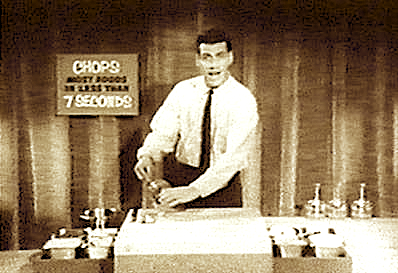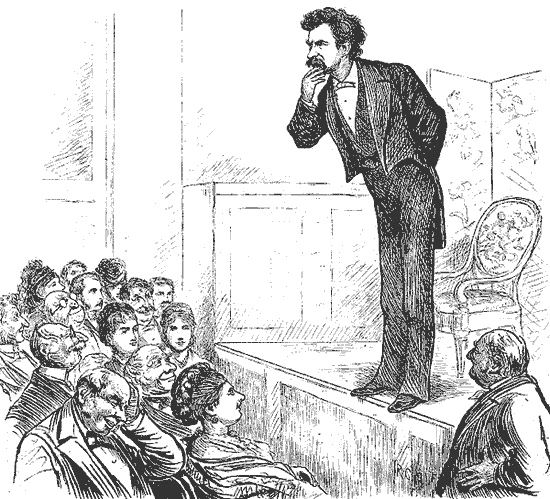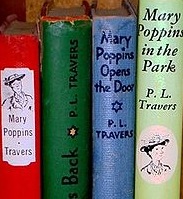
I’m just back from the opening weekend of the Victoria Film Festival — yes, even living a mere three hours from the border, I still had to take a ferry boat to see any significant amount of Canadian film, and I’m delighted to report that this particular festival’s offerings were well worth a few hours of traveling over wind-jostled water. Normally, it’s only the hand-held camera work that leaves one a bit seasick at an indie film festival, but in this instance, the voyager to and from the festival could enjoy the educational experience of comparing literal seasickness with the merely visually-induced variety.
A good time was had by all, in short.
I was thinking of you, readers, during the gala first screening of a potential crowd-pleaser entitled ONE WEEK, an often genuinely delightful romp about an unfortunate soul who learns that he has that rarest of diseases, asymptomatic Stage 4 cancer metastasized through all of his major organs. So what does he do? Naturally, he goes on a solo motorcycling spree across most of Canada, in order to learn Important Life Lessons (ILL), of course.
Because, you know, no filmgoer has ever seen a protagonist do that before. At least the Canadian Rockies part.
Some of you are already anticipating the point I’m about to make, aren’t you? “I’m onto you, Anne,” the second-sighted predict. “You’re going to draw a parallel between this basic film plot, which we’ve all seen many times before, and the premise repetition Millicent the agency screener sees constantly. I’m also sensing that you’re going to spout that old publishing biz truism, it all depends on the writing.”
Gotcha, oh anticipators: I was not going to say that at all. (But well caught, anyway.) No, I was going to say that I thought of you fine people all throughout this film because the protagonist is an aspiring writer.
Because, you know, there has never been a movie about one of those. Aspiring writers make marvelous progress-markers in films, apparently, because as soon as they learn whatever ILL the script dictates, all the plot has to do in order to create a happy ending is to show his (almost never her, I notice) book for sale in a store window.
You know, the way that the road to publication always works in real life. Authorial success or failure has nothing to do with the writer’s talent, storytelling ability, and/or whether s/he has anything interesting to say, evidently, but by true movie logic, is composed of equal parts wanting it more than anybody else and resolving one’s personal crises through ILL.
Add luck and stir. Presto: publication!
Seldom in a film does a writer do anything as pedestrian as, say, sit in front of a computer screen, typing away, or staring off into space, thinking, or sending out 150 query letters. Admittedly, the way writers actually spend their work time isn’t all that interesting to observe — “Look, honey, he just finished entering changes from the hard copy, crumpled up a piece of paper, and recycled it!” — which is why, in case you’ve been wondering, that biopics about writers tend either to ignore their writing entirely (in HENRY AND JUNE, for instance, the sole appearance any piece of Mssr. Miller’s writing makes is when his justifiably fed-up wife tosses a manuscript in the air like confetti) or to pretend that their lives were exactly like their books.
Because, naturally, no one ever writes anything that isn’t autobiographical. Unless, of course, it’s a memoir, in which case we should all assume that it’s a collection of monumental lies.
In ONE WEEK, for example, the protagonist has written the expected lightly fictionalized autobiographical novel. Thus, those of us cowering in the dark of the movie theatre know implicitly that he is a devotee of truth.
That’s lucky, because the audience has to take the protagonist’s writer cred on faith: in a moment that if it appeared on the page would cause any Millicent in the business to shout, “Show, don’t tell!” we are simply told that he was an aspiring writer — by a voice-over, no less. As in an inexplicably high percentage of films with characters-who-write, the audience was never actually treated to the sight of him DOING any of it.
Because, presumably, those of us who court the muse are invisible to film, in much the way that a vampire is invisible to a mirror.
And now, you will be delighted to hear, we are approaching the reason that I brought this film up at all: our hero was not only a writer-behind-the-scenes, but a discouraged, rejected one.
How do we know this? Well, the voice-over told us so, accompanied by a shot of the protagonist standing in front of what appeared to be a grand total of fifteen rejection letters thumb-tacked to a bulletin board. This small handful of rejections, the narrator tells us, so depressed our hero that he never tried to write anything again.
Well, that’s realistic enough, isn’t it? I don’t have anything clever or sarcastic to say about that. That’s just reality. I’m sure all of us know faint-hearted writers who, having made a breathless stab at catching the industry’s attention, curled up in a ball at the first rejection (or the 15th) and just gave up.
Sad? Of course. In real life, we all have sympathy for such tender souls who allow their dreams to be smothered by the jarring realization that the literary world was not, in fact, holding its breath, prepared to drop everything when this particular book came along
But would any talented novelist out there care to venture a guess as to why a reader might not find a fictional character suffering from the same slings and arrows of literary fortune all that sympathetic on the printed page? Or, if not all readers, at least professional ones like Millicent?
If you immediately shouted out, “Because Millicent the agency screener knows that it’s a heck of a lot easier to sell a novel or memoir with an active protagonist to an editor than one who simply observes his life going on around him!” give yourself a gold star for the day. If you elaborated to explain why — murmuring, for instance, “Generally speaking, readers prefer following protagonists whose actions and choices move the plot along, rather than being helpless, unresisting victims of a smothering fate — although that particular preference is stronger in U.S. readers, and thus in NYC-based Millicents, than in the other literary capitols of the world” — award yourself two gold stars and a big kiss on the cheek.
In response to the great gasp I just heard from the large majority of novelists and memoirists out there to whom that is news, never fear. In a couple of weeks, I’m going to delve into the ubiquitous problem of the passive protagonist, one of the most common reasons that novels and memoirs alike get rejected mid-manuscript.
For now, I just want to point out the additional reason that an agent, editor, contest judge, or other professional reader tend not to find writer-who-gives-up-at-first-rejection story at all sympathetic: not only is it an exceedingly common phenomenon, but they also know from first-hand experience those who are prepared to give up so easily seldom make it as authors, even if they do manage to get picked up with unusual speed. If the first rejection doesn’t wither these shy souls, the first bad review will.
Not very empathetic with what can be honest-to-goodness heart-rending pain? Definitely. But at a time in literary history when even the best manuscripts generally get rejected dozens and dozens of times before being picked up, such an attitude is at least understandable, isn’t it?
I’m sensing some uncomfortable shifting in chairs out there. “But Anne,” I hear those of you disturbed by that last paragraph demur, “isn’t knowing that likely to depress at least some of us into not sending out our work at all? So why even bring it up, since you just spent much of January urging us to take control of our submissions, polish them up, and send them on their merry way?”
Well observed, uncomfortable shifters. My goal here is twofold: to remind all of you who are in the throes of querying and submission that it’s only sensible to gird your proverbial loins for potential rejection, since pretty much every eventually successful author encounters quite a bit of it on the way to publication, and to reassure those of you who have been brave and virtuous enough to be sending out queries and submissions that no single rejection can possibly mean that it’s not worth sending out your work again.
And frankly, even the Millicent who rejected it would probably tell its author that. These days, the pros expect a good manuscript to have been rejected quite a bit before it finds a home. All a single rejection NECESSARILY means is that a particular person said no on a particular day.
You may have noticed that this particular reality runs contrary to popular belief amongst aspiring writers, but the fact is, no individual agent represents the entirety of the industry’s opinion. In other words, please don’t give up as quickly as the writer in ONE WEEK — in this market, it just doesn’t make sense.
Trust me on this one: virtually any book that you liked that came out within the last five years was rejected more than 15 times. And yes, now that you mention it, the fact that the protagonist gave up after what was quite a cursory submission history did make this particular audience member wonder if he had it in him to be a successful novelist at all.
So there I was, all set to suspend my disbelief and follow this ex-writer throughout his often-amusing story, when WHAMMO! that ubiquitous narrator spoiled the whole thing for me by informing the audience that if ONLY our hero had made one more submission, he would have discovered that HarperCollins had just hired an editor hungry for precisely the type of book he had written.
Wait a minute — those fifteen rejections were supposed to be from publishing houses, not agencies? Major ones like HarperCollins, the kind that as a matter of policy do not accept ANY submissions from unagented writers? And our hero is despondent because his novel has gotten rejected by them?
I was flabbergasted. All I wanted to do was grab the protagonist by his button-down shirt and shout into his face, “Honey, no one ever read that book. Those rejections that depressed you so much are form letters.”
Strange to say, no one else in the theatre seemed moved to similarly histrionic disbelief.
Yet from a writer’s point of view, this revelation could mean only one of two things: either the audience is supposed to think the protagonist is completely ignorant, too unprofessional to bother to learn how the publishing industry actually works before blithely sending off a manuscript, or that no one affiliated with the film bothered to do said homework — because, really, if all of those rejections had been from agents, rather than publishing houses, they would have been precisely as depressing, wouldn’t they?
I’ll leave it to future filmgoers to decide which is the more probable interpretation. Suffice it to say that at no point in the film does either the protagonist, anyone around him, or that self-satisfied narrator ever suggest that the proper thing to do would be to find an agent, since that is how fiction is sold.
I’m sensing more disgruntlement out there, amn’t I? “I’m confused, Anne. Why are you so positive that no one at a major publishing house ever read our hero’s book?”
Other than the fact that all of the major US publishing houses accept only agented submissions, you mean? If you don’t believe me, check out their websites — and you should, because any editor who works for them will expect a writer of promise to be aware of this fact. While some smaller and independent publishers still do accept submissions directly from writers, the big boys don’t.
Which means, in practical terms, that the inevitable result of our hero’s sending a manuscript to an editor at a great big publishing house would be the manuscript’s immediate return, if he included a SASE, along with a prefab rejection letter devoid of any content specific to that particular book. Or, if it were an electronic submission, either a form-letter e-mailed response or no reply at all.
So, as anyone with any experience with those publishers could have told him: never, ever submit an unsolicited manuscript to a publisher. It’s just a waste of your time and resources. Wait until you are asked to send that manuscript.
Actually, a wise aspiring writer extends this stern little axiom to small publishing houses and agencies, too, since both routinely reject unsolicited manuscripts unread. The rejection letter tucked into the SASE might not specifically say that — the whole point of a form-letter rejection, after all, is that it is not tailored to every contingency — but this is such a ubiquitous policy that it’s safe to assume that the sheer fact of the submitter’s having jumped the gun lead to summary rejection.
So how does one go about getting a manuscript solicited? As we have often discussed here, usually by the writer’s either querying or giving a verbal pitch to an agent or editor from a small press. If they like the query or pitch, they will ask to see pages — thus the term solicited.
Yes, yes, I know: most of you are already aware of this, but since either ONE WEEK’s protagonist or its screenwriter was evidently unaware of this important set of realities, I felt compelled to spell it out. I would hate for any good aspiring writer out there to give up after fifteen rejections that essentially meant nothing more than You don’t know how the publishing industry works, do you?
I’m hearing more huffing. “That seems like a pretty draconian way to treat a person’s dreams,” some of you sniff. “Not to mention self-defeating. How do they know that one of those unsolicited manuscripts ISN’T the next classic or the next major bestseller?”
A perfectly valid question, but the fact is, rejecters of unsolicited manuscripts receive so many properly-submitted manuscripts that they don’t really have to worry about the one that might have gotten away. That’s merely a practical response to the huge volume of manuscripts that are written every year.
Also, you know how I often mention that one of the reason agencies expect potential clients to jump through so many hoops is to weed out the writers who can’t or won’t follow directions? As hard as it may be to face, if the fine folks who run publishing houses have a choice — and I assure you that they do — between a good manuscript by an aspiring writer who has taken the time to learn the rules of submission and an equally good one by someone who has not, they’re not going to hesitate an instant before selecting the first.
And rejecting the second unread. Please don’t make the mistake of sending out unsolicited materials; it will only end in heartache.
Which is why, contrary to the impression I might have given above, I would advise aspiring writers to see ONE WEEK: perhaps unintentionally, it’s a cautionary tale about the perils of not doing your homework before submitting. For a manuscript, it honestly is a life-or-death issue.
And that brings me back to the question in the title, or at least a variation on it: if you found that you had only a limited time to live, much of it would you invest in trying to get the work you had already written published? Or would you instead write something new that you had already intended to write but never had the time? Polish off something already in progress?
Yes, these questions are a trifle morbid, but for those of us who have devoted ourselves to the life of the pen — and thus to a bid for immortality — they’re not insignificant. As we discussed in December, an awful lot of good writers put off until tomorrow what they could be writing today. Even more frequently, aspiring writers often delay the moment of composition until that oft-delayed ideal moment when they will ostensibly have scads of time with nothing else to do.
I’ll spare you the obvious conclusion to this thought. But isn’t it a pretty good argument for getting on the ball right away?
And you thought I was kidding about having thought about all of you throughout the screening of this film! More thoughts on form letter rejections follow tomorrow — keep up the good work!






















